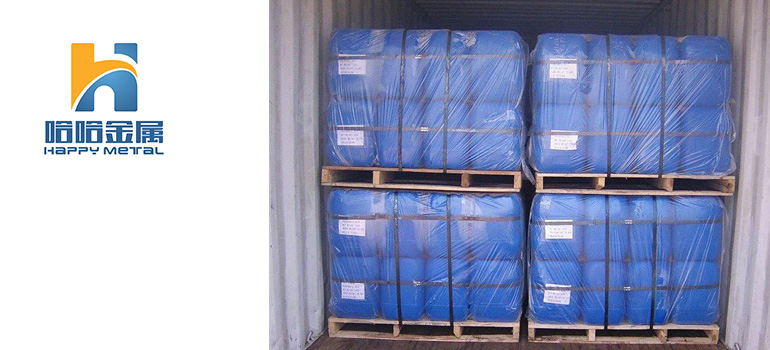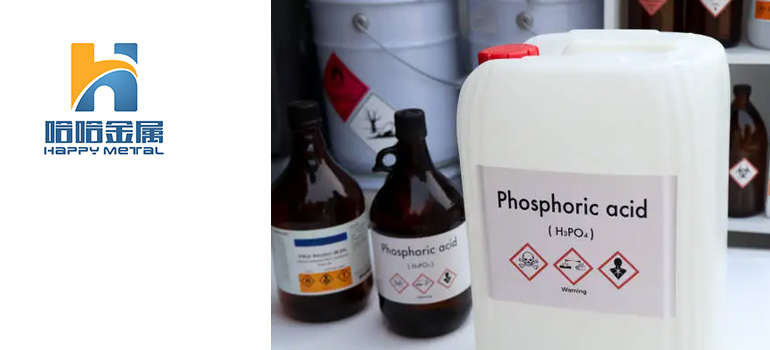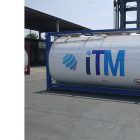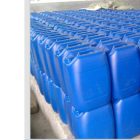Summary:
Why Food Grade Phosphoric Acid is a Safe and Effective Food Preservative?
What is Food Grade Phosphoric Acid and How Does It Work as a Preservative?
Safety Considerations for Using Food Grade Phosphoric Acid as Food Preservative
The Effectiveness of Food Grade Phosphoric Acid in Extending Shelf Life
What is Food Grade Phosphoric Acid and How Does It Work as a Preservative?
Food grade phosphoric acid is a highly concentrated form of phosphoric acid, a colorless and odorless liquid that naturally occurs in various foods and beverages. It is commonly used in the food industry due to its ability to preserve the taste, texture, and safety of food products. Unlike its industrial counterpart, food grade phosphoric acid is purified to ensure it meets specific safety standards for human consumption.
Phosphoric acid is known for its acidity, with a pH level of around 2.1 when dissolved in water. This high acidity helps inhibit the growth of bacteria, molds, and yeast, which are common causes of food spoilage. By lowering the pH of the food or beverage it is added to, food grade phosphoric acid creates an environment where these microorganisms cannot thrive, thereby extending the shelf life of the product.
The Chemical Properties of Food Grade Phosphoric Acid
Food grade phosphoric acid is an inorganic acid composed of phosphorus, oxygen, and hydrogen. Its chemical formula is H₃PO₄, and it is typically produced by combining phosphate rock with sulfuric acid. This results in a pure form of phosphoric acid that is suitable for use in food and beverages. Its acidic properties are key to its effectiveness as a preservative. By lowering the pH of food, it helps maintain the desired flavor and texture by preventing unwanted microbial growth.
How Food Grade Phosphoric Acid Acts as a Preservative in Food
Phosphoric acid works as a preservative by lowering the pH of foods, which creates an acidic environment that inhibits the growth of spoilage-causing microorganisms. The bacteria, molds, and yeast that would typically degrade food thrive in neutral to slightly acidic conditions, so by reducing the pH below 5.0, food grade phosphoric acid slows down their activity. For instance, in soft drinks, phosphoric acid helps maintain the beverage’s stability and prevents it from becoming contaminated with harmful microorganisms, ensuring a longer shelf life.
Common Applications of Food Grade Phosphoric Acid in the Food Industry
Phosphoric acid is widely used in the food industry, particularly in soft drinks, canned foods, processed meats, and dairy products. In beverages like colas, it is not only used to control acidity but also to enhance the flavor profile and prevent spoilage. In dairy products, food grade phosphoric acid is often added to control the texture and shelf life of processed cheese, while in canned vegetables, it helps preserve color and flavor by slowing the growth of bacteria.
Food grade phosphoric acid can also be used in ready-to-eat meals, salads, and sauces, providing a simple yet effective way to keep the products fresh without the need for additional preservatives or artificial additives. Its versatility and effectiveness have made it an essential tool for food manufacturers worldwide.
Safety Considerations for Using Food Grade Phosphoric Acid as Food Preservative

Food grade phosphoric acid is widely used in the food industry, known for its ability to extend shelf life and maintain product quality. However, as with any additive or preservative, it is essential to consider the safety aspects of its use. In this section, we will explore the safety standards that govern its use, its potential risks, and how it is regulated to ensure its safe consumption.
Regulatory Standards for Food Grade Phosphoric Acid
Food grade phosphoric acid is subject to strict regulations to ensure its safety for human consumption. In the United States, the Food and Drug Administration (FDA) classifies phosphoric acid as a Generally Recognized as Safe (GRAS) substance when used in accordance with established guidelines. The FDA has approved its use in various food and beverage products, including soft drinks, processed foods, and dairy items, provided it meets certain purity standards.
Similarly, the European Food Safety Authority (EFSA) also recognizes food grade phosphoric acid as safe when used within specified limits. Regulations are in place to ensure that the concentration of phosphoric acid in food products does not exceed safe levels. For example, in soft drinks, the allowable limit for phosphoric acid typically ranges from 0.2% to 0.5%, depending on the type of beverage.
These regulations are designed to ensure that food grade phosphoric acid is used in a way that poses no risk to public health, and its use is monitored by food safety authorities worldwide to protect consumers.
Is Food Grade Phosphoric Acid Safe for Consumption?
When used correctly and within regulatory limits, food grade phosphoric acid is considered safe for human consumption. It is important to note that the acid is naturally found in many foods, such as dairy products, meat, and even certain fruits and vegetables, in small amounts. The phosphoric acid used as a food preservative is of a high purity and does not contain harmful impurities.
However, like any acidic substance, excessive consumption can lead to potential health concerns. Overconsumption of phosphoric acid, particularly from beverages that contain high amounts of it (like cola drinks), can lead to a number of issues:
- Dental Erosion: Phosphoric acid’s high acidity can erode tooth enamel over time if consumed excessively. This is why it’s important to consume beverages containing phosphoric acid in moderation and maintain good oral hygiene.
- Bone Health: There has been some concern that excessive intake of phosphoric acid might interfere with calcium absorption and impact bone health, particularly in individuals who consume large amounts of soda. However, most studies suggest that the impact is minimal when consumed in moderation as part of a balanced diet.
- Digestive Health: Large amounts of phosphoric acid can cause gastrointestinal irritation, especially in sensitive individuals. This can result in symptoms like stomach discomfort or acid reflux. Again, the key is moderation.
While phosphoric acid is safe at low concentrations, it’s crucial to follow regulatory guidelines to avoid excessive exposure.
Recommended Concentrations of Food Grade Phosphoric Acid for Food Preservation
To ensure safety and effectiveness, the use of food grade phosphoric acid in food preservation is strictly regulated by food safety agencies. The concentrations of phosphoric acid added to food products depend on the type of product and the desired effect. For example:
- Beverages: In carbonated soft drinks, the concentration of phosphoric acid typically ranges between 0.2% to 0.5%. This concentration is sufficient to maintain the acidity and preserve the beverage without posing a risk to health.
- Canned Foods and Vegetables: Phosphoric acid is often used to preserve color, texture, and freshness. The amount added is generally low, typically not exceeding 0.1% of the total product.
- Processed Meats and Dairy: In certain meat products and processed cheeses, food grade phosphoric acid helps to enhance flavor and prevent microbial growth. The concentrations in these products are also regulated to ensure safety.
Manufacturers are required to follow the safety guidelines and use phosphoric acid only in amounts that are proven to be effective for preservation, while minimizing any risks associated with overuse. Additionally, manufacturers must list phosphoric acid on the ingredient labels of products, ensuring transparency for consumers.
By adhering to these safety considerations and following the established regulatory limits, food grade phosphoric acid can be used effectively as a preservative without posing significant risks to consumer health. As with any food additive, moderation is key, and it is always recommended to consume foods and beverages containing phosphoric acid in a balanced and responsible manner.
The Effectiveness of Food Grade Phosphoric Acid in Extending Shelf Life
Food grade phosphoric acid has become an essential tool in the food industry for extending the shelf life of many products. Its effectiveness as a preservative stems from its ability to alter the pH level of foods and beverages, which in turn inhibits microbial growth and preserves the overall quality of the product. In this section, we will explore how food grade phosphoric acid works to extend shelf life, compare its effectiveness to other preservatives, and discuss real-world examples of its use.
Comparison of Food Grade Phosphoric Acid vs Other Preservatives
When it comes to food preservation, there are a variety of methods and substances that manufacturers can use. Some of the most common include sodium benzoate, citric acid, potassium sorbate, and vinegar. While each of these preservatives has its own benefits, food grade phosphoric acid offers unique advantages in certain applications.
Acidic Environment: Unlike preservatives like sodium benzoate, which work primarily by inhibiting microbial growth, food grade phosphoric acid creates an acidic environment that is hostile to most bacteria, molds, and yeasts. Many spoilage-causing organisms thrive in neutral or slightly acidic conditions, but by lowering the pH to below 5.0, phosphoric acid effectively prevents microbial activity. This makes it especially effective in beverages and acidic foods, where maintaining a certain pH is crucial.
Stability in Carbonated Beverages: In soft drinks, particularly cola-type beverages, phosphoric acid not only serves as a preservative but also as an ingredient that contributes to the desired taste profile. While citric acid is also used in some drinks, phosphoric acid has the added benefit of stabilizing the carbonation, preventing the beverage from going flat and helping it retain its fizz for a longer time.
Long-Term Effectiveness: Many preservatives have limited effectiveness over time, especially when exposed to light, heat, or air. Phosphoric acid is more stable than many organic acids and synthetic preservatives, ensuring a longer-lasting preservation effect. For example, in canned vegetables and processed meats, phosphoric acid helps maintain the color and texture of the food while protecting it from bacterial contamination, even after long storage periods.
Benefits of Using Food Grade Phosphoric Acid for Long-Term Preservation
Food grade phosphoric acid offers several distinct benefits when it comes to long-term food preservation:
Microbial Inhibition: The main mechanism by which phosphoric acid extends shelf life is by lowering the pH of the food or beverage, which makes it more difficult for spoilage-causing bacteria, molds, and yeasts to survive. Many microorganisms require a neutral to slightly acidic pH to grow and reproduce, but phosphoric acid creates an inhospitable environment that prevents their proliferation.
Prevention of Oxidation: In addition to its antimicrobial properties, phosphoric acid also helps in preventing oxidation in certain foods. Oxidation can cause food to deteriorate, lose flavor, and discolor. By stabilizing the pH of the product, phosphoric acid reduces the chances of oxidation, particularly in beverages and other liquid-based products.
Extended Shelf Life in High-Risk Products: Food grade phosphoric acid is particularly effective in extending the shelf life of high-risk food products such as dairy, canned vegetables, and fruit juices, where microbial contamination is a major concern. It helps preserve both the flavor and nutritional content, ensuring that products can be stored for longer periods without significant quality degradation.
Cost-Effectiveness and Ease of Use: Compared to some other preservatives, phosphoric acid is relatively inexpensive and easy to use in food processing. Its versatility across different types of foods and beverages, combined with its effectiveness, makes it a preferred choice for many manufacturers.
In conclusion, food grade phosphoric acid is a highly effective preservative that plays a vital role in extending the shelf life of a wide range of food products, particularly beverages, processed meats, dairy, and canned goods. Its ability to lower pH and prevent microbial growth makes it indispensable in the food industry, offering both safety and convenience to manufacturers and consumers alike. As with any preservative, its use should be regulated and balanced to maintain product quality while ensuring consumer safety.
Maybe you are interested in the folllowing:The Benefits of Citric Acid in Cosmetics: Why It’s a Must-Have Ingredient




